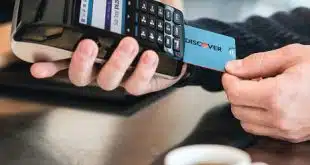Processor Square Inc. expects its strategy of providing what it calls a “cohesive” set of services to merchants will aid its efforts to reach profitability, the company reported Wednesday in its first-ever earnings result since becoming a publicly-traded company. It reported earnings for the fourth quarter and all of 2015.
It has some work to do. While its total revenue of $1.27 billion for 2015 is 49% more than the $850.2 million it took in in 2014, San Francisco-based Square, whose chief executive Jack Dorsey also heads social network Twitter Inc., posted a net loss of $179.8 million last year, an increase from its $154.1 million loss in 2014.
Square’s gross payment volume totaled $35.6 billion in 2015, a 49.6% increase from $23.8 billion in 2014. In the fourth quarter, Square’s gross payment volume was $10.2 billion, a 45.7% increase from $7 billion in the same period a year prior. Square defines gross payment volume as the total dollar amount of all card payments processed by merchants using Square, not including refunds. Square says it has more than 2 million active merchants, which it calls sellers.
“Our results show we are executing on what we set out to do: grow our core payments business and extend into other services that deepen our relationships with our sellers,” Square said in a letter to shareholders. “We are not only seeing strong growth in our core payments business but also across our software and data products.”
These products—including Square Capital business financing and Square Payroll services—are part of Square’s approach to offering merchants all the services they might need. That’s essential for a company that started 7 years ago catering to micromerchants, and one that needs to grow revenue.
Part of that strategy is enabling Square merchants to accept EMV chip cards and contactless payments. Square says it has received 350,000 orders for its combined EMV chip card and contactless reader. Available now in Apple Inc. stores, the device will be sold later this spring on Amazon.com Inc., and in Staples, Best Buy, and Target stores.
“We want to associate our logo with the ability to pay by phone,” Dorsey said during a conference call to discuss Square’s earnings. He acknowledged there is much education of merchants and consumers yet to be done.
Square also noted the success of Square Capital, its merchant cash-advance product, and Square Invoices, a digital-invoice service. Approximately 60,000 Square merchants use Square Capital, said Sarah Friar, Square chief financial officer, and approximately 100,000 merchants use Square Invoices. “These are good examples of creating innovation close to payments and seeing quite quick adoption,” Friar said.
Additionally, Dorsey said, Square merchants are exhibiting more specialized use of its products, as evidenced by some merchant categories adopting with Square Appointments, a scheduling service.
This array of services, built on payment processing, which Friar said produces the best margin of any Square product, is critical to the company’s attempt to become profitable.
“Fundamental to our success is the speed of our transactions,” Dorsey said, “and how quick sellers can process transactions with Square.” Competitors will have some services akin to what Square offers, but merchants must assemble the components from different suppliers, he said. “We believe we have the only cohesive flow,” he said. How well the products work together matters more to Square merchants than the discount rate, Dorsey said.
Square noted that revenue from processing transactions for Starbucks Corp., a deal that ends later this year, amounted to $47.1 million in the fourth quarter, but transaction costs totaled $46.9 million.






